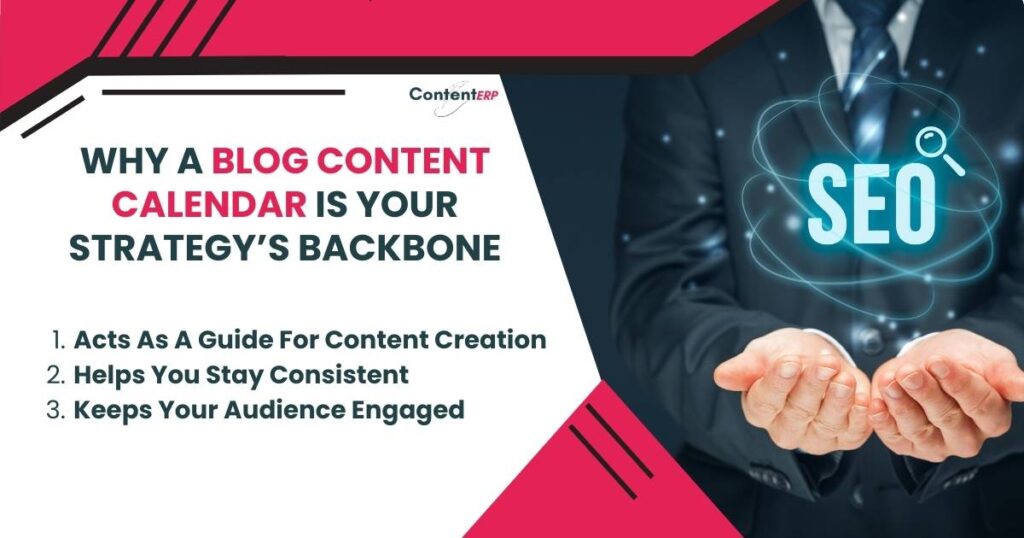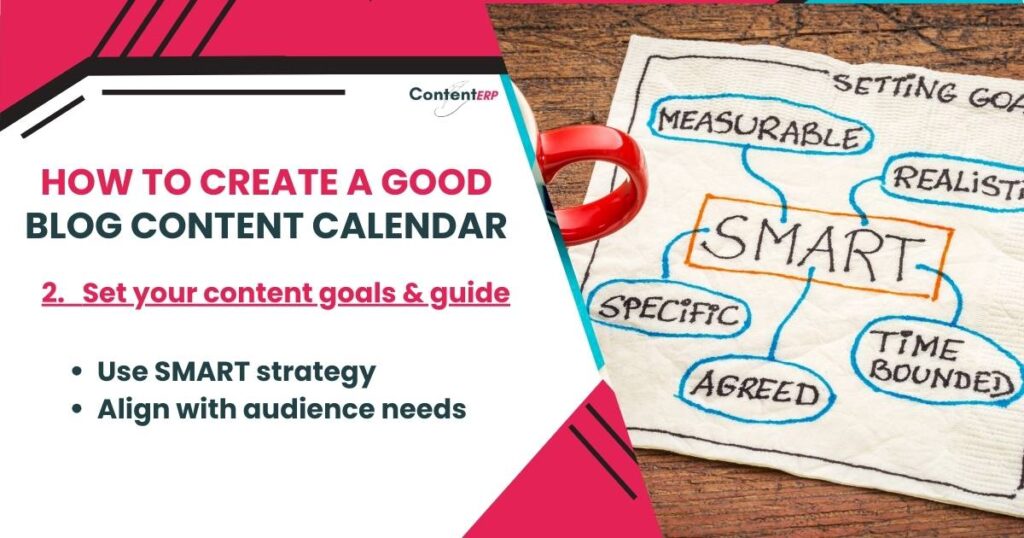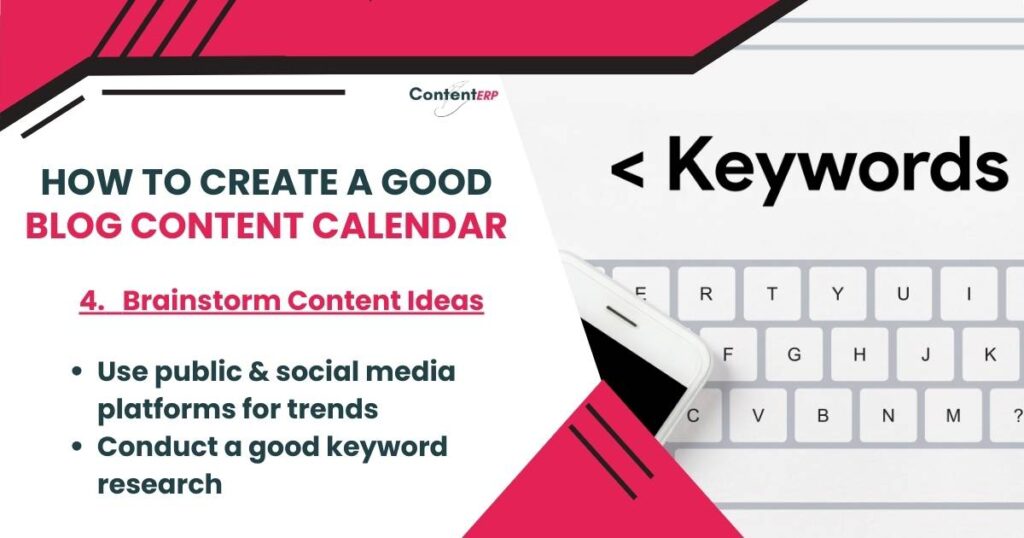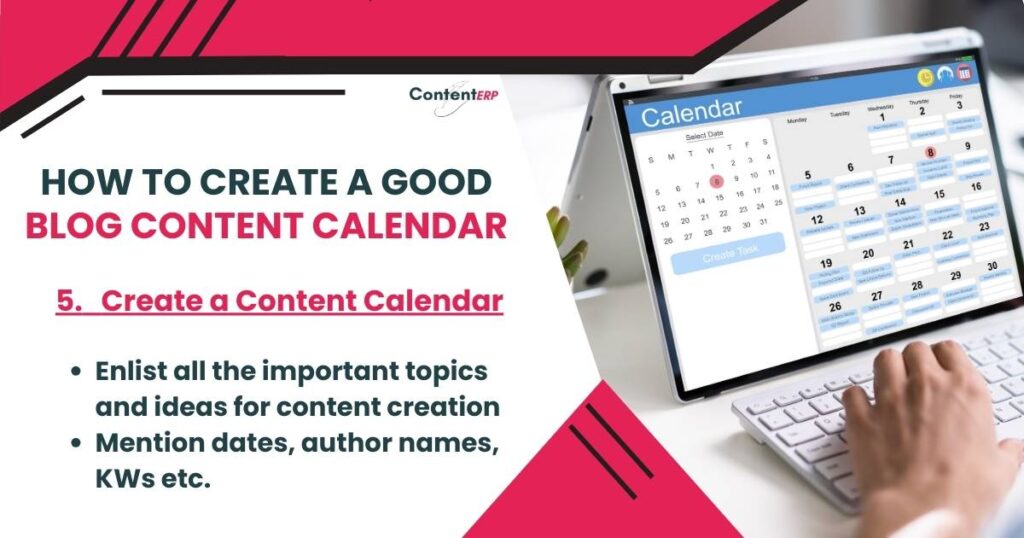“Plans are worthless, but planning is everything,” Dwight D. Eisenhower once said. And that’s exactly how crucial the “planning” part is for each journey. And this is especially true in the digital world of content creation. 2024 is becoming more and more competitive so content planning is now not just a necessity but has become a cornerstone of success. How, then, can we create a winning content strategy? The answer lies within a well-structured blog content calendar.
Imagine having a crystal ball that not only predicts the future but also allows you to use it to your advantage. A blog content calendar is just that because it helps you create the type of content that your audience actually wants to watch and listen to.
Let’s reinforce the art of content planning with our top 5 secrets to create an irresistible blog content calendar that’ll bring a revolution in your content strategy. Ready? Let’s get started.
Why Is a Blog Content Calendar Your Strategy’s Backbone
The content creation process is never random. You have to plan and organize it properly for it to make the desired impact. Nothing’s more suitable and helpful for content distribution and execution than a well-crafted blog content calendar.
Here’s how it help you in your digital marketing journey:
Strategic Vision
A blog content calendar acts as a strategic map that guides your content creation with precision and a solid goal you want it to achieve. It helps you make sure that every piece of content has a specific purpose and is not thrown at your audience out of the blue without any aim. Hence, it is what perfectly aligns your content with your overall business objectives.
Consistency & Relevance
“Consistency is the hallmark of the unimaginative”. In the blogging world, Oscar Wilde’s quote relates directly to retaining your audience and improving your SEO. A blog content calendar helps you to stay consistent, avoid missing your deadlines and maintain a steady flow of content that then keeps your audience engaged and your blog relevant in Google’s eyes.
The Statistical Advantage of Having a Blog Content Calendar
Consider this: 73% of B2B companies use content marketing, but only 40% have a documented strategy. Those with a developed content marketing plan are more effective. So why are the rest of the 60% companies failing to achieve their digital marketing targets? The answer is simple and straightforward: they don’t have a well-crafted strategy aka a blog content calendar.
In a world where content is king, a content calendar is the throne upon which it sits. It is what helps you take your strategy from ordinary to extraordinary.

5 Secrets to Create an Irresistible Blog Content Calendar
With each passing day in 2024, the art of content planning is becoming more and more critical for the success of any blog. So how to create a blog content calendar that will ultimately help you build a blog that not only ranks high on SERPs but also resonates deeply with your readers?
Let’s tell you about some proven secrets that’ll help you create an irresistible one.
1. Get to Know Your Audience
Imagine you’re crafting content or a product not just for the masses but for someone specific, a friend even. To get it across the line of sales/engagement or whatever your marketing objectives are, you have to hit the sweet spot where what you offer and what your audience seeks align perfectly.
For that to happen, you have to know exactly who your audience is. But how would you identify them?
Dig into the Data
Have you ever sat down and caught up with an old friend? Using the past data you have on your audience to know about them is almost similar. What do they like? What have they engaged with in the past? For instance, a whopping 56% of bloggers see social media as their top traffic source.
This stat is a game-changer, right? It tells you what you have to do and which platforms to target and mediums to use to know your audience.
Feedback is Gold
Direct feedback, be it surveys or social media interactions, can give you insights no amount of guessing ever can. You have to ask, listen, and then act on what your audience tells you. That’s the only way to succeed in your objectives when you are about to create a blog content calendar.
If they want funny content, give them something hilarious to remember. If they want data driven podcasts, cater to that need.

2. Set Your Content Goals & Style Guide
Now, just like you plan for a journey before you undertake it, you finalize your content goals and style guide in a similar way. You wouldn’t set off without knowing your destination, would you? So here’s how you come up with specific goals and style guide that your blog content calendar will help you achieve:
Be SMART About It
Specific, Measurable, Achievable, Relevant, and Time-bound – these are what your goals should follow. Be very specific about what you have to do, how and when. SMART goals will help you achieve at least 10 times more than any generic goals. Don’t just shoot in the dark without any set objectives as it would only frustrate you while your resources go to waste in failure.
For example, a casual goal could be to increase your blog traffic. However, setting a target to increase it by 505 within the next 6 months would be a SMART goal. Notice the difference in how the SMART goal is more specific, measurable and bound by time?
Align with Audience Needs
Your style guide and goals should reflect exactly what your audience is looking for in your content. Your content should solve the problems of your audience, answer their questions and provide them with some real value. By doing this, you will make sure that your content attracts their attention and keeps them loyal to your brand.
Your style guide should have a similar tone, quality and consistency across all your content types for your audience. That way, they will know what to expect from your content.

3. Conduct a Content Audit
“Audit” might sound like a really tedious task but it’s actually a kind of treasure hunt. In a content audit, you have to see what content gems are still working and which of your past pieces don’t reflect your current strategy or audience’s interests. The main purpose of auditing is for you to identify the areas in which your content can improve
Make a Spreadsheet List
First of all, create a spreadsheet and list all your content pieces there that includes the URL, title, publish date and other info. This will give you a clear view of what you have. Catalog your content as much as you can. What topics have you covered? Which ones have never been updated?
Analyze and Refine Your Content
Look at how each piece performed. Did it engage your audience? See which posts have the most engagement or conversions. Use your findings to refine your content strategy. Identify the content that you should update/evolve.
Delete the irrelevant ones if you don’t need them. Maybe there’s also a topic that you have never written about or a content format your audience loves, so follow them to create something new.
Your audit will tell you what you have to do at present and in the future for your content to remain relevant and engaging. Here’s our tip: Keep auditing your content regularly over its whole content management lifecycle to keep it fresh and relevant.

4. Brainstorm Content Ideas: With Your Audience Feedback
Did you ever simply sit down for coffee with a friend and just… talked? Well, that’s exactly how brainstorming any new content ideas for your blog content calendar should feel like. Now is the time to come up with something that your audience needs, almost as if they’re right there with you.
Use Public Platforms to Know Your Audience’s Needs
Start with what’s already out there. Platforms like Quora, Reddit and even the comments section on your blog or social media can tell you a lot about what your audience likes or not. What are the problems that they’re facing? What challenges are they trying to overcome? Put all of these pieces together to help you see the bigger picture and then create content that addresses these pain points.
Conduct A Good Keyword Research
One of the best ways to generate some new content ideas is to go for a keyword research about topics you have in mind. Tools like Ahrefs or Google’s Keyword Planner will help you understand what your audience is searching for.
Did you know, for instance, that long-tail keywords can improve your conversion rate and relevance to your target audience? So by using such keywords, you can attract more traffic to your site and sell more.
Find Content Ideas on Social Media
Social media isn’t just for scrolling, mind you. It’s a goldmine for content ideas for those who are willing to explore it. Keep an eye out for trending hashtags or topics that can tell you about your next topics. A thread or a trend that matches your content goals and brand can be converted into a blog post or video to attract more traffic towards your website.

5. Create an Editorial Blog Content Calendar
An editorial calendar is a tool that will help you plan and organize your blogs and their topics/keywords well in advance. It works as a scheduler and your content roadmap. It includes the title, publish date and the outlines of the content you have to publish and when.
Here are the steps you should follow to create one:
Start with a blank calendar
For this purpose, you can simply use a spreadsheet, a dedicated editorial calendar tool or even a physical calendar to create your editorial calendar. Just make sure that you have enough space to add all the details about each post, such as the title, topic, author and due date.
Add key dates
Now add all the important dates without leaving any behind. Include all such days like public holidays, events etc. This way, you will be able to make sure that you don’t miss any important deadlines.

Brainstorm topics
Remember the ideas you collected from your audience research and content audit? Now is the time to create a list of new blog topics using them all. And while you are finalizing your topics, you’re your focus primarily on what your audience wants to read about, what’s currently trending and what topics you haven’t covered yet.
Assign topics to dates
Once you have created some new topics, now is the time to assign them specific dates on your editorial calendar when you will create content on them. Here’s a pro tip: try to balance the topics so that you have a mix of evergreen and timely content.
Fill in the details
Now add all the remaining details that you had left behind earlier such as the author, target keyword, and due date for each post on your editorial calendar.
Pheww… There you go with how to create an irresistible blog content calendar. But wait, there’s more – much more. We have saved the best for the last. Keep reading.
Make Content Creation Feel like a Breeze with ContentERP
Content creation is much more hectic and time consuming than you think. Endless spreadsheets, messages being sent on various communication channels, keeping up with your team while you follow your blog content calendar – it’s nothing less than mental exhaustion. That’s why we came up with an ingenious solution: ContentERP.
ContentERP is your all-in-one content management tool. It simplifies your workflow and brings everything from keyword research to content publication all in one place. With ContentERP, you can organize and assign tasks to your team in real time without wasting hours and hours. This will help your team become more productive and achieve a smooth and uninterrupted content flow.
Some of the key features of ContentERP include:
- Streamlined content creation process – from keyword research to publishing.
- Team management with role assignments.
- A “Drip-Fed” content system for a steady production.
- Centralized management for multiple niche sites.
- In-built keyword research tools.
- Insights and analytics for tracking team performance and financial metrics.
- Chrome Extension for easy time tracking and payroll management.
So, say goodbye to the mess and hello to organized, stress-free content management with ContentERP. It’s less of a tool and more of a partner that will help you on your way to success in the content world.

Conclusion
Your creativity and consistency are the foremost qualities you’d require to succeed in the digital world with a top-notch blog content calendar. It should be a very strategic approach that’s supported by good planning, detailed analytics and an understanding of your audience’s needs.
This is exactly where ContentERP shines. It gives you the clarity and efficiency you so need to achieve those content marketing goals. With ContentERP, you will be able to optimize your content production process and succeed in your industry like no one ever did before.
This blog shows us that the path forward is clear: you have to fulfill the needs of your audience in order to achieve your marketing goals with a blog content calendar. And the power of ContentERP is what will help you to face the challenges and make use of all those opportunities of content marketing in 2024.

